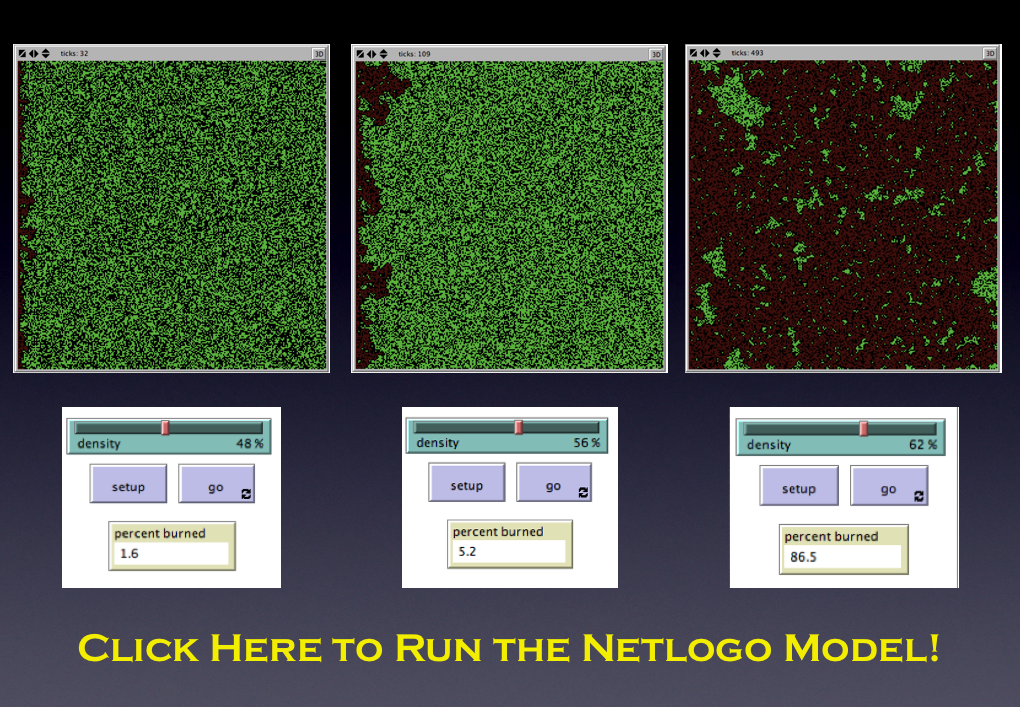The Forest Fire Model is a commonly invoked example of non-linear system–where a very small perturbation can generate significant differences in observed outcomes. Consider the above Netlogo–to Run the Model: (1) Adjust the Density Slider to set the concentration within the Forest. (2) Hit the Setup Button (3) Hit the Go Button …. Rinse and Repeat at different levels of Density.
Above is the output for a run of the model at several levels of Density {48%, 56%, 62%}. Notice the differences in the Percent Burned {1.6%, 5.2%, 86.5%}.
This is obviously a theoretical model but it has potential application to a wide class of substantive questions including regulatory failure. In addition, the Forest Fire Model is important because it has been invoked in the critique of the popular book The Tipping Point. Specifically, in discussing the book network scientist Duncan Watts notes “It sort of sounds cool … But it’s wonderfully persuasive only for as long as you don’t think about it.” Watts notes “…trends are more like forest fires: There are thousands a year, but only a few become roaring monsters. That’s because in those rare situations, the landscape was ripe: sparse rain, dry woods, badly equipped fire departments. If these conditions exist, any old match will do…. and nobody… will go around talking about the exceptional properties of the spark that started the fire.” (Quotes from Jan 2008 Is the Tipping Point Toast? Fast Company Magazine).

